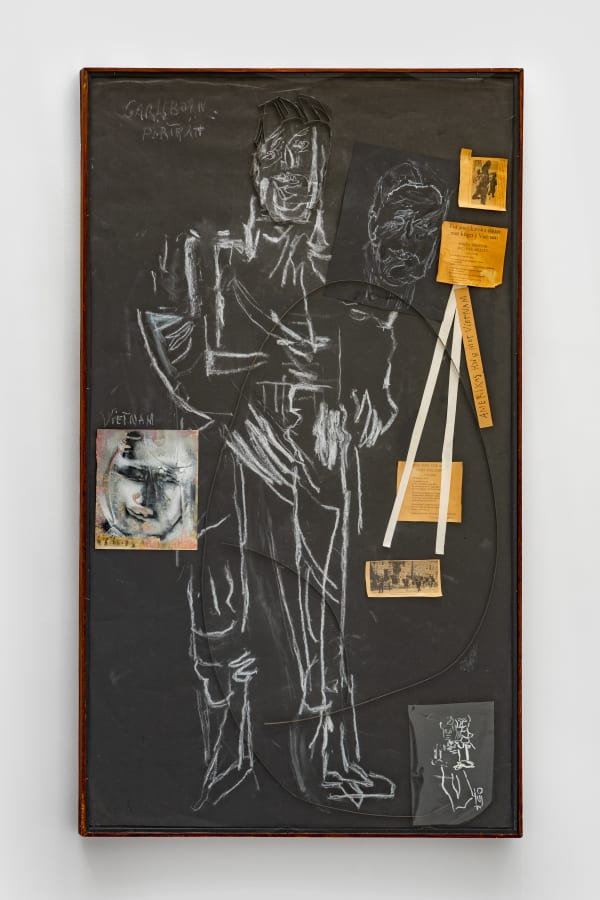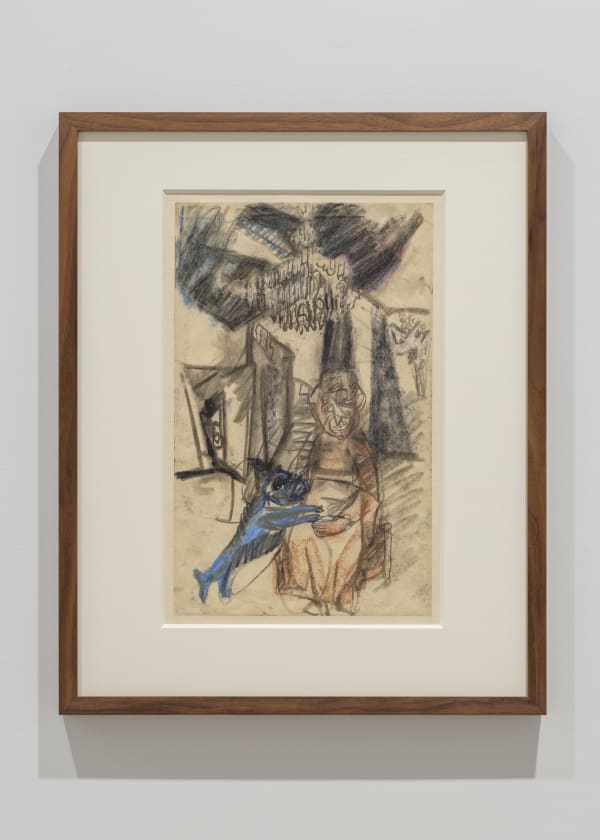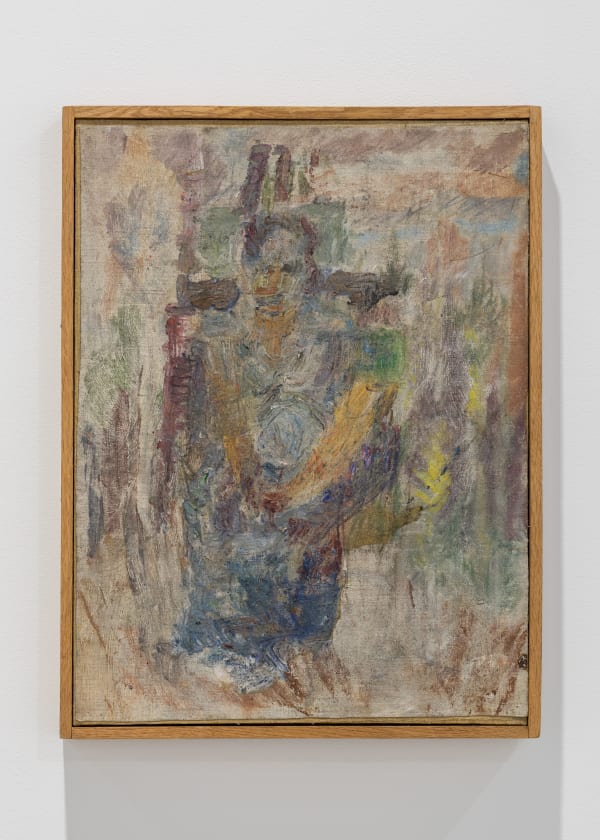Siri Derkert : Paris
In the 1960s, Derkert also experimented with non-traditional materials. The portraits she used to paint on canvas or draw on paper morphed into works of concrete and metal. In the exhibition, strong examples of this multidisciplinary period are presented with two portraits of Pontus Hultén, Swedish curator and the first director of the Musée national d'art moderne at the Centre Pompidou. Derkert’s main interest in these portraits is both private and political in nature, conveying the inner selves of those depicted and commitment to various causes but with less emphasis on their physical appearance.
The process that had now begun lead to Derkert’s late, public commissioned works such as The Woman Pillar at T-centralen (1956-8) and the monumental work Carvings in Natural Concrete at Östermalmstorg’s metro station (1961-5) – arguably one of the most central works of modern Swedish art and a worthy manifestation for peace, equality and justice. The work, with its explicit political message, provoked strong reactions in the daily press at the time and was considered highly controversial. The piece is a bold and visionary fusion of text and image, featuring excerpts from La Marseillaise and The Internationale, the word “peace” rendered in 50 languages, and tributes to influential women including Sappho, Hypatia, Virginia Woolf, and Simone de Beauvoir. Its expressive visual style, reminiscent of graffiti, continues to resonate with modern audiences
The Woman Pillar depicts numerous symbolic references, including women at work such as oarswomen, bricklayers, conductresses and typists, and highlights women's work as an essential part of their empowerment and contribution to the ongoing struggle for democratic rights. Derkert saw that part of the problem for women was the lack of role models, and this was a way of balancing the representation and visibility of contemporary women in the public sphere.
Siri Derkert (1888-1973) participated in the Venice Biennale in 1962, as the first Swedish representative at the newly opened Nordic Pavilion. The same year, she was shown in an extensive retrospective at the Stedelijk Museum in Amsterdam. Her work has been shown in two retrospectives at Moderna Museet in Stockholm (1960 and 2011). Derkert's work is included in many Swedish museum collections, including the National Museum, Stockholm, Moderna Museet, Stockholm, Malmö Art Museum, Gothenburg Art Museum, Skövde Art Museum and Museum of Artistic Process and Public Art, Lund, but also The British Museum, London.
-

Siri Derkert
Installation view, Andréhn-Schiptjenko Paris, 2025.
-

Siri Derkert
Installation view, Andréhn-Schiptjenko Paris, 2025.
-

Siri Derkert
Installation view, Andréhn-Schiptjenko Paris, 2025.
-

Siri Derkert
Installation view, Andréhn-Schiptjenko Paris, 2025.
-

Siri Derkert
Installation view, Andréhn-Schiptjenko Paris, 2025.
-

Siri Derkert
Installation view, Andréhn-Schiptjenko Paris, 2025.
-

Siri Derkert
Installation view, Andréhn-Schiptjenko Paris, 2025.
-

Siri Derkert
Installation view, Andréhn-Schiptjenko Paris, 2025.
-
 Siri Derkert, Talare på Fogelstad, 1943-54
Siri Derkert, Talare på Fogelstad, 1943-54 -
 Siri DerkertStatarbarnen på Hersbyholm, 1932-33
Siri DerkertStatarbarnen på Hersbyholm, 1932-33 -
 Siri DerkertLandskap med hus och ryttare / I väntan på Liv /Kustlandskap med figurer, Själland / Stadslandskap, Köpenhamn, 1918-19
Siri DerkertLandskap med hus och ryttare / I väntan på Liv /Kustlandskap med figurer, Själland / Stadslandskap, Köpenhamn, 1918-19 -
 Siri DerkertFigur (Talare), 1960's
Siri DerkertFigur (Talare), 1960's
-
 Siri DerkertMatriarkatets död, 1960
Siri DerkertMatriarkatets död, 1960 -
 Siri DerkertUtan titel, 1966-67
Siri DerkertUtan titel, 1966-67 -
 Siri DerkertIntellektuellt par, 1967-69
Siri DerkertIntellektuellt par, 1967-69 -
 Siri DerkertPontus Hultén, 1967-69
Siri DerkertPontus Hultén, 1967-69































